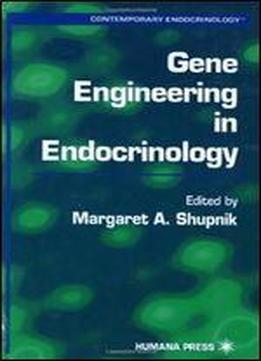
Gene Engineering In Endocrinology (contemporary Endocrinology)
by Margaret A. Shupnik /
2000 / English / PDF
6.9 MB Download
During the past five to ten years, a variety of tools has been developed in the disciplines of both gene engineering, and molecular and structural biology. Some of these advances have permitted scientists not only to identify and characterize genes, but also to target these genes by disruption, thus eliminating their function in living animals, and to det- mine the biological responses to altered gene products. This has particular significance in endocrine systems, in which feedback mechanisms between the hypothalamus, pi- itary, and end organs are critical in normal physiology. Interpretation of the physiological significance, or the site of action of specific molecules in this context, has been difficult prior to transgenic technology. Major advances have occurred specifically in the areas of growth and development, and of reproduction. Coupled with analysis of naturally occurring mutations in humans, the use of transgenic animals and in vitro systems has recently allowed endocrinologists to understand the importance of specific thyroid hormone receptor isoforms in vivo, the molecular basis for generalized resistance to thyroid hormones via mutations in the nuclear receptor, and mechanisms for suppressing gene transcription. Previously designated orphan rec- tors, such as steroidogenic factor-1, were demonstrated to have critical roles in dev- opment and reproduction. Other nuclear receptorsincluding those for thyroid hormone, estrogens, androgens, and progesteronewere shown to bind to coactivator and co- pressor proteins that modified their transcriptional activity, and contributed to the ce- specific effects of the hormones.











